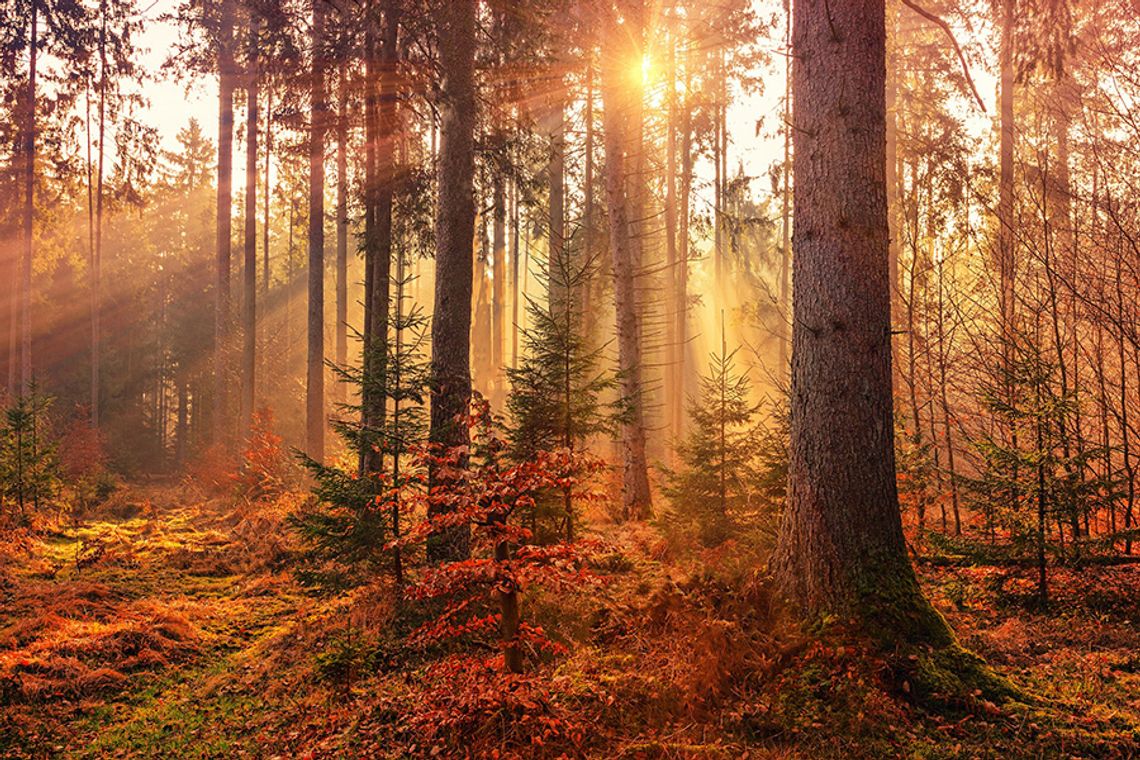The Morton Arboretum scientists share what to expect during Fall Color Festival
LISLE, Ill. (Sept. 21, 2023)—While it remains to be seen exactly how the drought in early 2023 and heavy rainfall in late summer will affect fall tree foliage colors across the Chicago region, the tree experts at The Morton Arboretum have insights into what to expect.
According to Arboretum forest ecologist Christy Rollinson, Ph.D., numerous variables are at play when it comes to the timing and vibrancy of fall colors. “We’re monitoring the health of trees at the Arboretum and in the Chicago region to track what fall color may be like this year,” she said. “If the weather continues to be mild through early October, the Chicago area may have bright fall color,” Rollinson said. “But another dry spell, heat wave or early freeze could tip things into an early change with more yellows and browns rather than the vibrant oranges and reds we saw last year”
The leaf-changing season is already underway at the Arboretum and throughout the Midwest. Rollinson said that the diversity of the Arboretum’s tree collections, with more than 4,100 different plants, means that it has a long fall-color season to both enjoy and study climate change impacts, as tree species change color at various times. Autumn blaze maples around the Arboretum Visitor Center parking lot are beginning to turn red. Oaks, meanwhile, are typically among the last trees to change color and are not expected to do so until October. Arboretum visitors can track fall colors as they emerge throughout its 1,700 acres in a weekly Fall Color Report on its website blog.
Compared to last year, 2023 summer weather conditions in the Chicago area were more extreme, Rollinson noted. Trees and plants faced a remarkably dry spring and early summer, with April through June reported as the second driest on record since the Arboretum began collecting the data in 1936. Satellite imagery showed less green, as many yards had dried up, particularly in low- and medium-developed urban areas, Rollinson said.
“Most trees in the region put out their leaves this spring during a stressful time of drought, and species have responded differently to those conditions,” Rollinson said. “Some trees whose leaves emerge late in the year, like honey-locust, seem to have made fewer and smaller leaves, while trees that leafed out earlier showed a range of responses, including discoloration and leaf curling.”
After the dry early summer, the region experienced many heavy downpours and severe flooding, making it the second wettest July since 1936, according to Arboretum data. As a result of the rainfall, most visible signs of drought stress have been alleviated, with trees and other plants experiencing new spurts of growth, Rollinson noted. Greenness quickly recovered after the rainfall and is now higher than average in many cases, according to satellite imagery.
“Scientifically, it will give us an incredible amount of information about how early, mid- and late summer weather separately influence the timing and vibrancy of fall color,” she said. “The conventional wisdom is that healthy trees will have the best fall color, and we really saw this in 2022 where there were fewer extreme weather events.”
Fall Color FestivalThe Arboretum celebrates its changing fall landscape each year with a Fall Color Festival with festivities for all ages throughout October. Special events include the Fall Color 5K Run and Walk, Oct. 7; The 13th Annual Glass Pumpkin Patch; Oct. 13 through 15; Cider and Ale Festival, Oct. 21; Scarecrow Trail, daily in October; and Walking Plays: “Anne of Green Gables,” weekends Sept. 23 through Oct. 22.
Seasonal concessions will also be available on weekends in October and Oct. 9 (Columbus Day/Indigenous Peoples’ Day) in the Arbor Court area outside the Visitor Center, including apple cider doughnuts, taffy apples, cotton candy, warm kettle corn, warm pretzels, chili and a selection of craft beers and warm beverages.
Other special fall-focused programs include Planting Fall Bulbs, Oct. 5, and Fall Foliage Walking Tours, Oct. 20 and 28.
The Arboretum’s Chicago Region Trees Initiative, a coalition of more than 200 partner organizations working together to improve the regional forest, will also host fall tree plantings looking for volunteers, a food forest workshop and an oak tree-focused Oaktober Celebration. Visit the chicagorti.org website for more event details.
The Fall Color Festival is supported by Duly Health and Care and PNC Financial Services.
For more information about Arboretum programs and special events, visit mortonarb.org.
About The Morton Arboretum The Morton Arboretum is a world-renowned leader in tree science and research. Its 1,700 acre site cares for 222,000 tree and plant specimens, representing 4,650 taxa from 40 countries. The Arboretum’s Center for Tree Science collaborates with researchers around the world, contributing scientific knowledge and technical experience to secure the future of trees. The Arboretum’s Global Tree Conservation Program leverages the expertise of the botanical garden community to protect and restore vulnerable and threatened trees. Its new Center for Species Survival: Trees, is the only tree-focused center designated by the Species Survival Commission (SSC) of the International Union for Conservation of Nature (IUCN), the world’s largest conservation organization. Additional information about the Arboretum’s scientific work and how it contributes to a greener, healthier world for future generations can be found at mortonarb.org.












